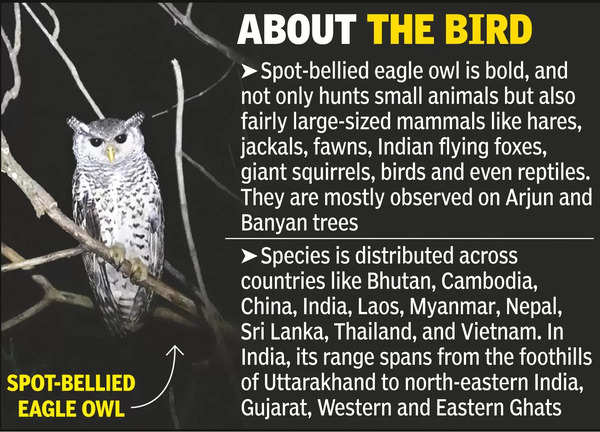Madhya Pradesh Switch to Hindi
Forest Eagle Owl
Why in News?
The Pench Tiger Reserve has become a favorable place for a lesser-known group of forest eagle owls, also identified as the spot-bellied eagle owl.
Key Points
- In Central India, these nocturnal birds have also been reported from Madhya Pradesh Pench and Kanha Tiger Reserve.
- The forest eagle owl, a large bird, is discovered in dense evergreen and moist deciduous forests close to water, in wet temperate, and riparian (adjacent to a water body) forests.
- Similar to many other owl species, the spot-bellied eagle owl also makes calls for multiple purposes such as communication, territorial protection, and attracting mates.
- The researchers recorded their calls and analysed the frequency with Raven Pro software.
- Raven Pro is a software program for the acquisition, visualization, measurement, and analysis of sounds.
Pench Tiger Reserve
- It is located in Nagpur District of Maharashtra and named after the pristine Pench River.
- The Pench river flows right through the middle of the park.
- It descends from north to south, thereby dividing the reserve into equal eastern and western parts.
- PTR is the joint pride of both Madhya Pradesh and Maharashtra.
- The Reserve is located in the southern reaches of the Satpura hills in the Seoni and Chhindwara districts in Madhya Pradesh, and continues in Nagpur district in Maharashtra as a separate Sanctuary.
- It was declared a National Park by the Government of Maharashtra in 1975 and the identity of a tiger reserve was granted to it in the year 1992.
- However, PTR Madhya Pradesh was granted the same status in 1992-1993. It is one of the major Protected Areas of Satpura-Maikal ranges of the Central Highlands.
- It is among the sites notified as Important Bird Areas (IBA) of India.
- The IBA is a programme of Birdlife International which aims to identify, monitor and protect a global network of IBAs for conservation of the world’s birds and associated diversity.


Chhattisgarh Switch to Hindi
Koya Tribe Conflict Over Sacred Mahua Flowers
Why in News?
In Godavari valley, the Koya tribe faces a cultural crisis as raids by the Special Enforcement Bureau threaten their cherished tradition of Mahua liquor consumption.
Key Points
- Mahua, a tropical tree scientifically known as Madhuca longifolia, plays a crucial role in the traditions of different tribal groups in India.
- Among the Koya community, the tree is revered and plays a significant role in various ceremonies. The blossoms emerge in the beginning of summer and are mainly utilised for making alcohol.
- Dried flowers are a key source of revenue for those who gather them. In the Godavari Valley, the Koyas produce cooking oil from Mahua nuts.
- It is a prominent forest tree in tribal areas of Bastar (Chhattisgarh) and plays an important role in the rural economy.
- The mahua flowers are a rich source of sugars and are said to contain vitamins, minerals and calcium.
- The flowers are fermented and distilled yielding spirituous liquor also known as ‘country beer’.
- An estimated 90% of the annual production of Mahua flower is used in the process of brewing beverages.
Koya Tribe
- Koya are one of the few multi-racial and multi-lingual tribal communities in India.
- They live in the forests, plains, and valleys on both sides of the Godavari River, in the states of Andhra Pradesh, Telangana, Chhattisgarh, and Odisha.
- The Koya are said to have migrated to central India from their original home in Bastar, northern India.
- Language:
- The Koya language, also called Koyi, is a Dravidian language. It is closely related to Gondi and has been strongly influenced by Telugu.
- Most Koyaspeak either Gondi or Telugu, in addition to Koyi.
- Occupation:
- Traditionally, they were pastoralists and shifting cultivators, but now-a-days, they have taken to settled cultivation supplemented by animal husbandry and seasonal forest collections.
- They grow Jowar, Ragi, Bajra, and other millets.
- Society and Culture:
- All Koya belong to one of five sub-divisions called gotrams. Every Koya is born into a clan, and he cannot leave it.
- The Koyas have a patrilineal and patrilocal family. The family is called "Kutum". The nuclear family is the predominant type.
- Monogamy is prevalent among the Koyas.
- The Koya practice their own ethnic religion, but also worship a number of Hindu gods and goddesses.
- Many Koya deities are female, the most important being the "mother earth."
- They maintain community funds and grain banks at the village level to help the needy families and provide food security.
- Koyas either bury or cremate the dead. They erect menhirs in memory of the dead.
- Their main festivals are Vijji Pandum (seeds charming festival) and KondalaKolupu (festival to appease Hill deities).
- Koyas perform a robust, colourful dance called Permakok (Bison horn dance) during festivals and marriage ceremonies.

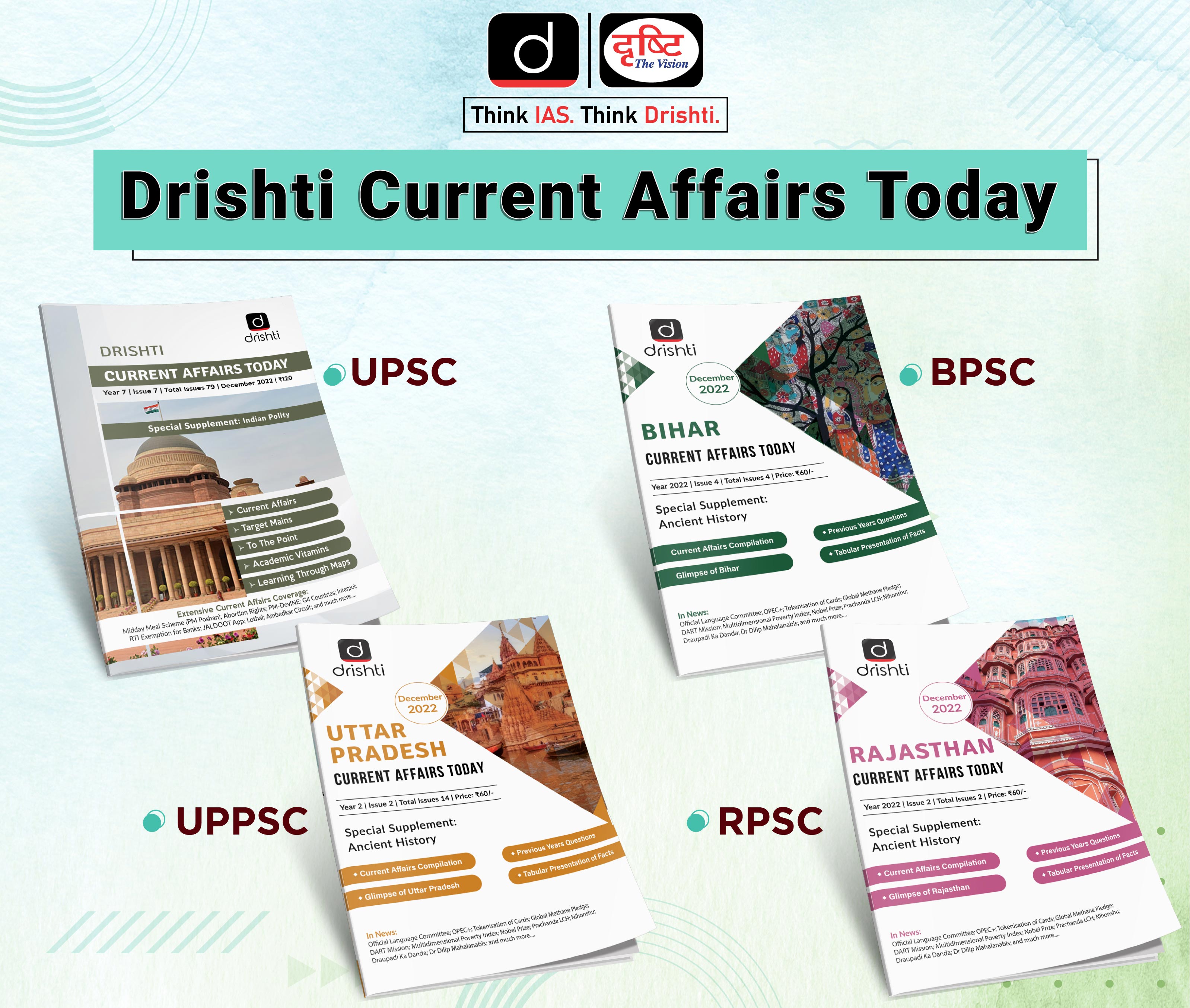
Uttarakhand Switch to Hindi
Relief to Uttarakhand from Wildfires
Why in News?
Recently, Rainfall has provided relief from the continuous forest fires in areas such as Pauri and Nainital of Uttarakhand.
Key Points
- Despite the current temperatures being lower by two to three degrees, the residents are advised to remove dried shrubs around their homes to avoid fires from spreading.
- The unusually high temperatures this season have accelerated the spread of forest fires.
- Over the past six months, Uttarakhand has witnessed more than 1,100 fire incidents, destroying over 1,500 hectares of forest land.
Government Initiatives on Forest Fire
- National Action Plan for Forest Fires (NAPFF), was started in 2018 with the goal of reducing forest fires by informing, enabling, and empowering forest fringe communities and incentivising them to collaborate with state forest departments.
- The Forest Fire Prevention and Management Scheme (FPM) is the only government-sponsored programme dedicated to assisting states in dealing with forest fires.


Uttar Pradesh Switch to Hindi
Agniveers to Join Indian Army’s Gorkha Rifles
Why in News?
Recently, in Varanasi, Agniveers from the third batch marched on to the parade ground of the 39 Gorkha Training Centre (GTC), crossing the ‘Antim Pag’ to join the 3 & 9 Gorkha Rifles of the Indian Army.
- 3 & 9 Gorkha Rifles are Gorkha infantry regiments of the Indian Army.
- These are among the seven Gorkha regiments of the Indian Army. The other regiments are 1 GR, 4 GR, 5 GR (FF), 8 GR and 11 GR.
Key Points
- Agnipath Scheme was launched in 2022. It allows patriotic and motivated youth to serve in the Armed Forces for a period of four years. The youth joining the army will be called Agniveer.
- Under the scheme, around 45,000 to 50,000 soldiers will be recruited annually, and most will leave the service in just four years.
- It provides for recruiting youths between the age bracket of 17-and-half years and 21 for four years with a provision to retain 25% of them for 15 more years.
- Eligibility Criteria:
- It is only for personnel below officer ranks (those who do not join the forces as commissioned officers).
- Commissioned officers hold an exclusive rank in the Indian armed forces. They often hold a commission under the president's sovereign power and are officially instructed to protect the country.
- Aspirants between the ages of 17.5 years and 23 years are eligible to apply.
- It is only for personnel below officer ranks (those who do not join the forces as commissioned officers).
- Objectives:
- It is expected to bring down the average age profile of the Indian Armed Forces by about 4 to 5 years.
- The scheme envisions that the average age in the forces is 32 years today, which will go down to 26 in six to seven years.


Uttar Pradesh Switch to Hindi
Faculty Induction in IIT-BHU
Why in News?
A 24-day faculty induction programme was inaugurated at IIT (BHU), Varanasi under the Malviya Mission Teachers Training programme, sponsored by the University Grants Commission (UGC).
Key Points
- This intensive programme will host 40 distinguished faculty members from across India, aiming at fostering professional growth and enhancing pedagogical skills.
- Malviya Mission Teachers Training Programme:
- The program aims to enhance the quality of education by providing customised training for teachers in higher educational institutions.
- It aspires to equip 15 lakh teachers across India with the skills needed to meet the goals of the National Education Policy (NEP).
- Renaming of Human Resource Development Centres (HRDCs) as Madan Mohan Malaviya Teachers' Training Centres was also announced.
- The program aims to enhance the quality of education by providing customised training for teachers in higher educational institutions.
University Grants Commission
- It came into existence on 28th December, 1953 and became a statutory body by an Act of Parliament in 1956, for the coordination, determination and maintenance of standards of teaching, examination and research in university education.
- The head office of the UGC is located in New Delhi.



.gif)

.png)





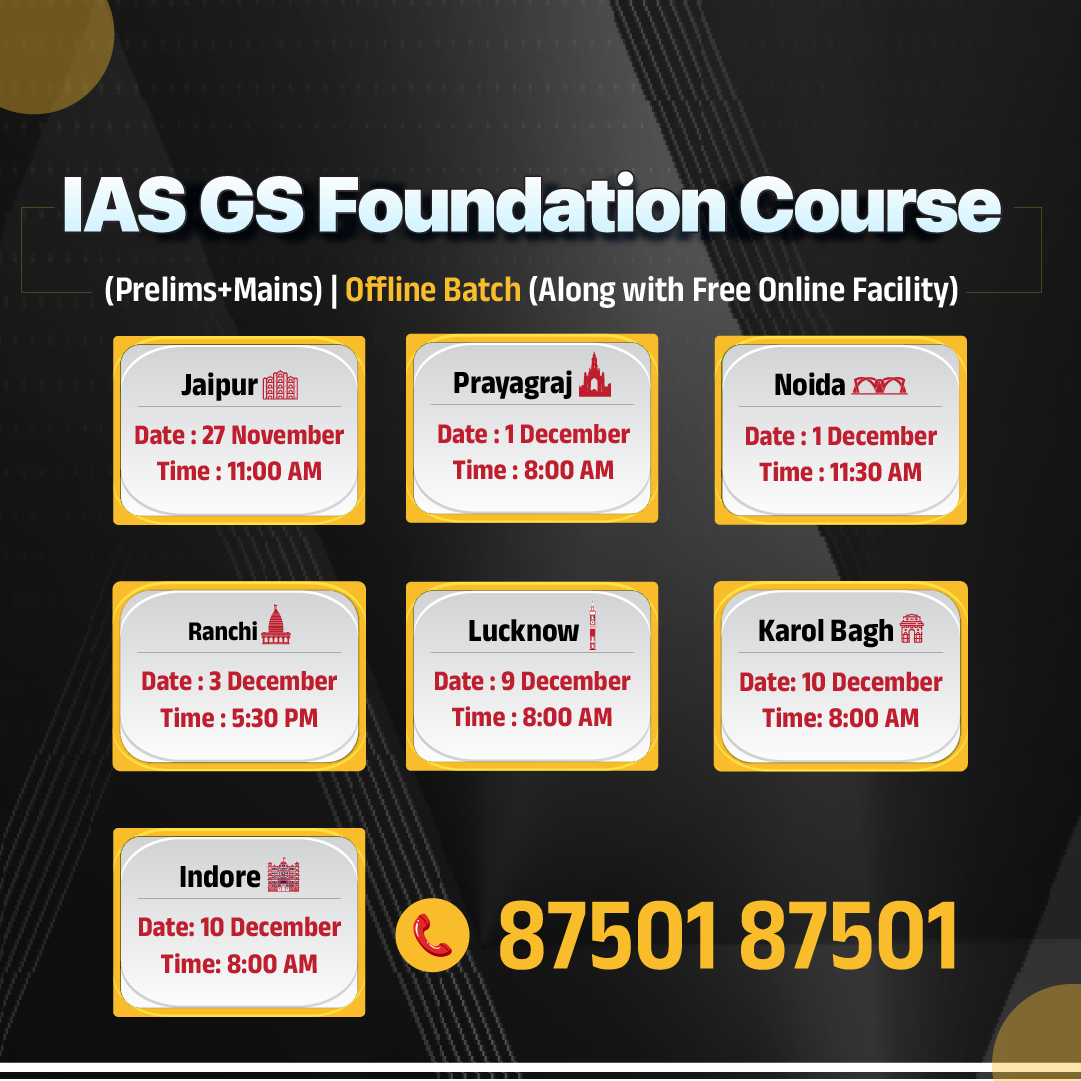

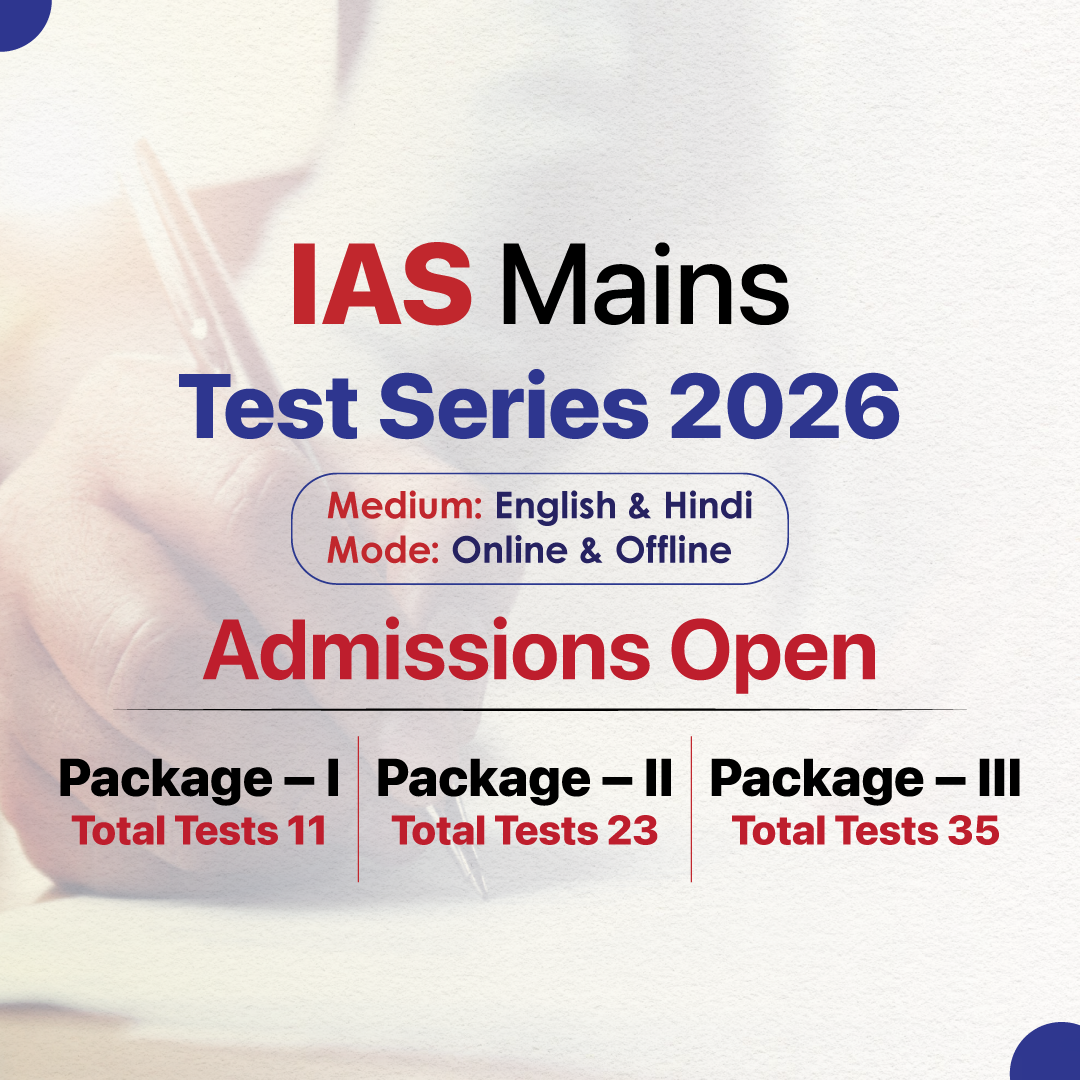

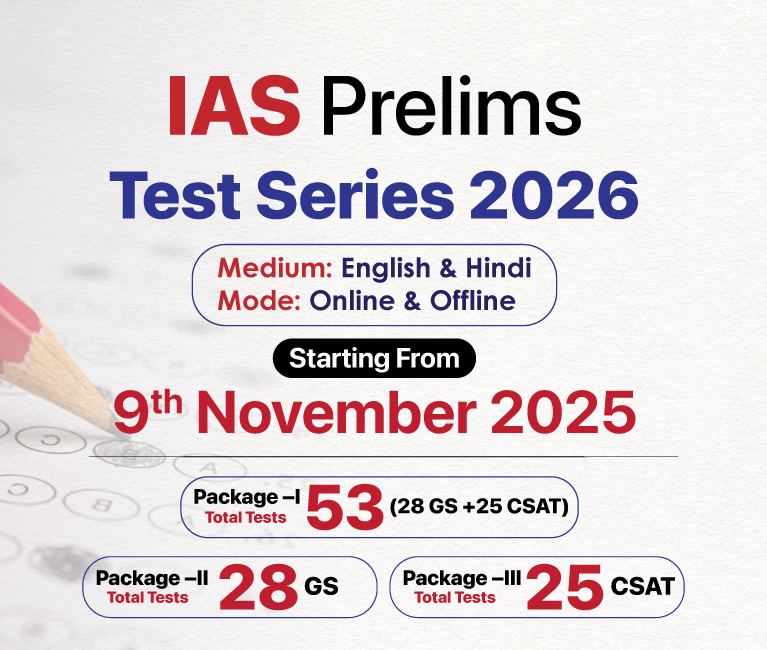


.png)


.jpg)



 PCS Parikshan
PCS Parikshan